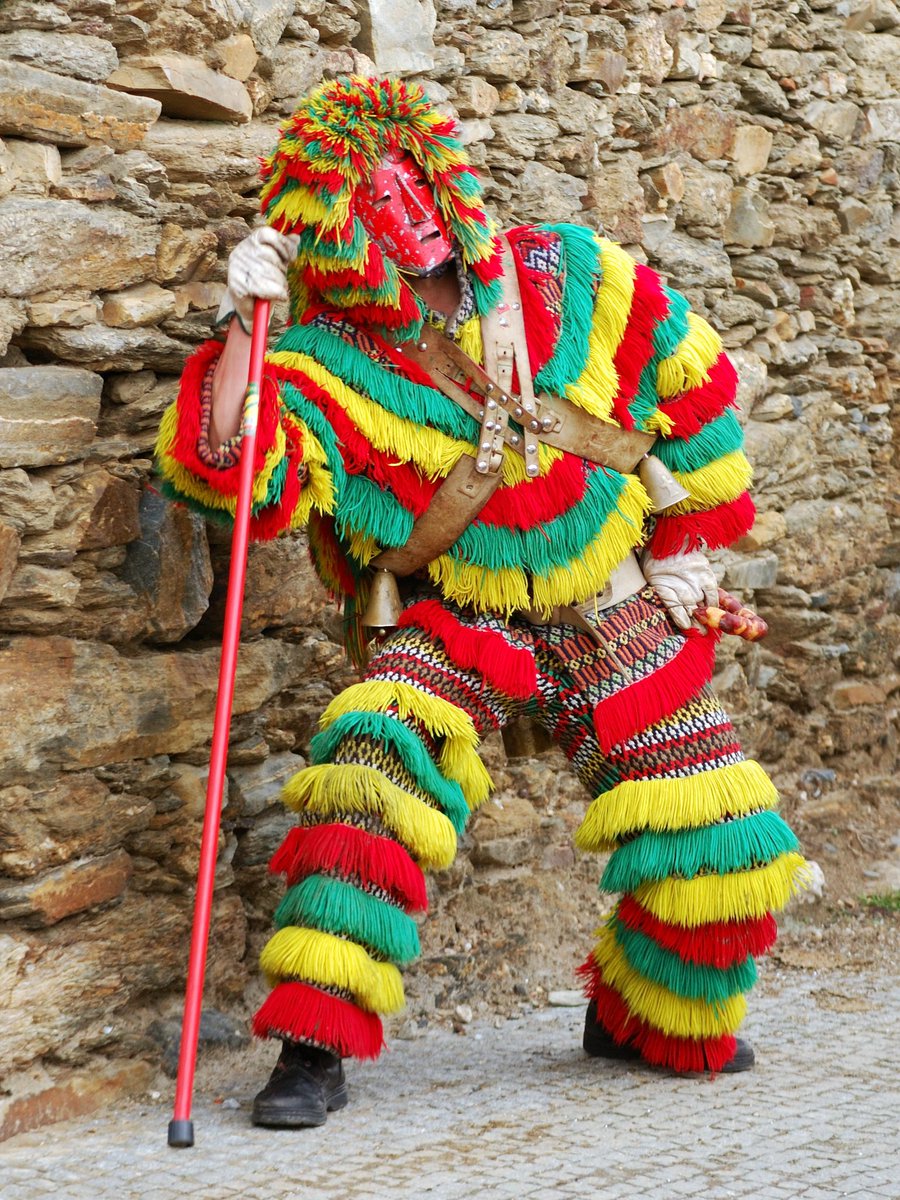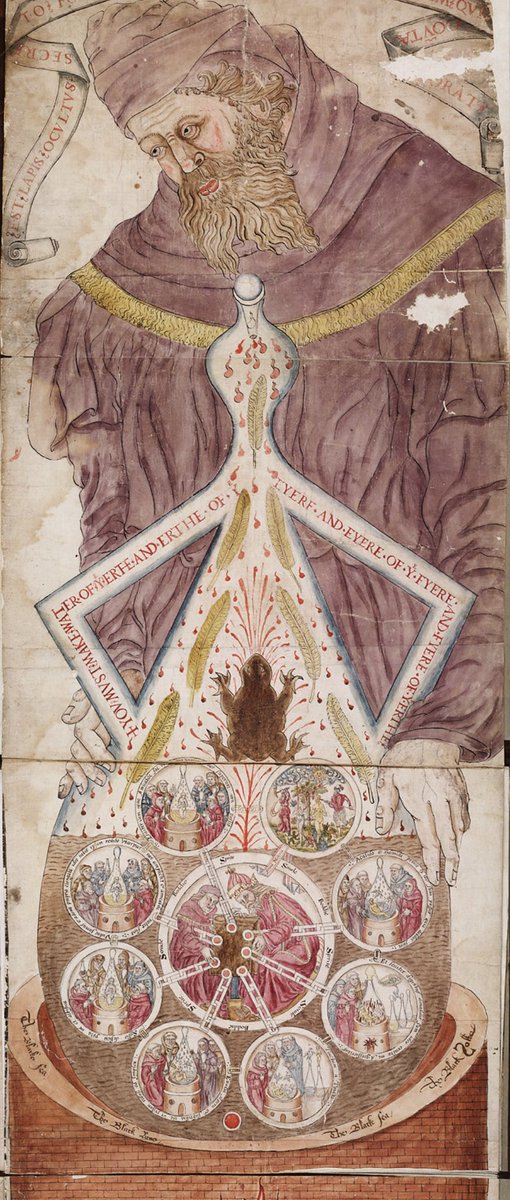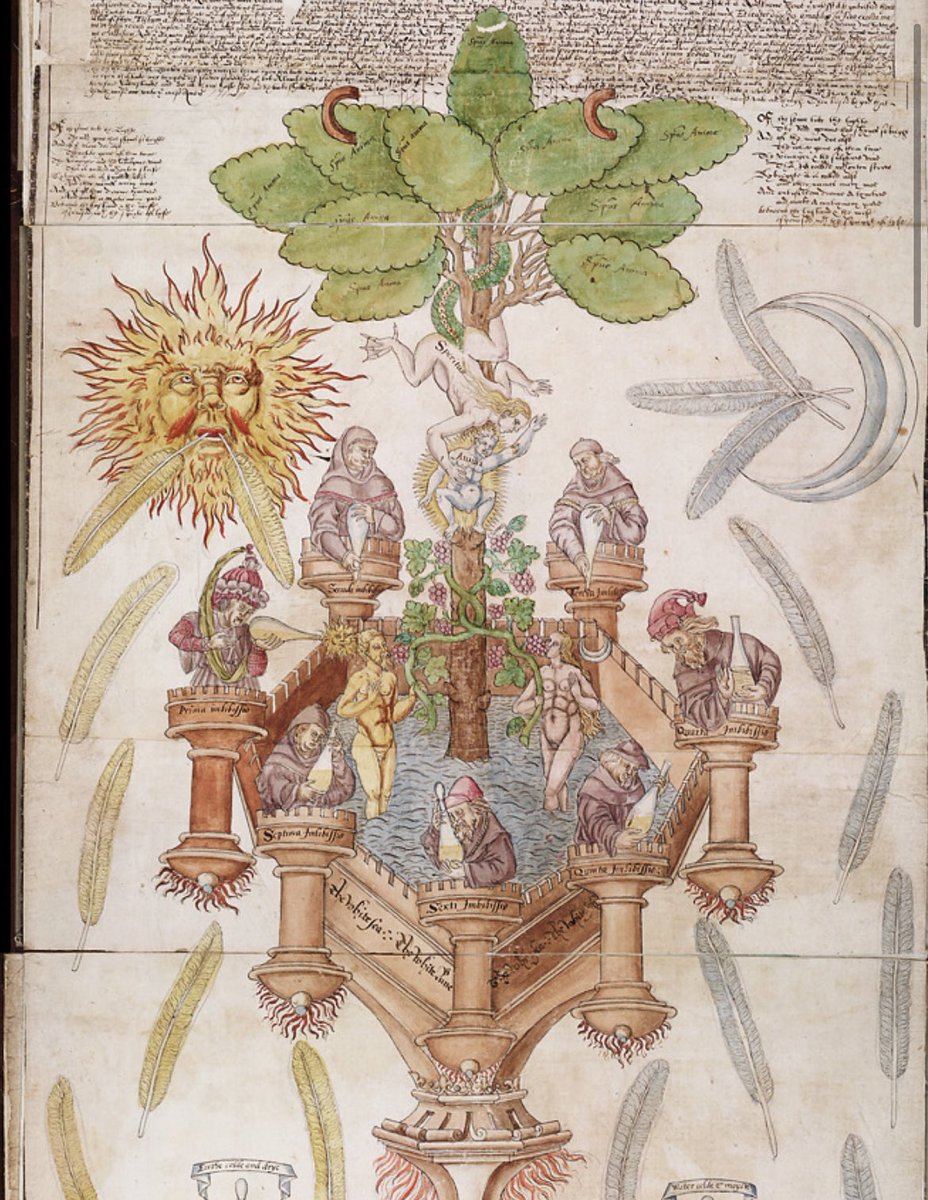Making my comprehensive mask thread, I realized the wealth of masquerade traditions in Iberia alone. Wanting to highlight the culture of my homeland, steeped in paganism entwined with Christianity, I decided to make a thread of solely Iberian mask traditions. Here you are: 







Beginning in Portugal, we must split up the Careto tradition. In Lazarim, masked figures are hidden by mischievous and fearsome wooden masks depicting animals and devils, running through the streets causing mischief, frightening both locals and evil spirits with their antics. 







In Lagoa, we can admire the unique carnival custom of the Careto de Lagoa. These Caretos wear a towering wooden mask often accented with paper streamers and fearsome horns. Viking influence is possible, though like other Caretos their purpose is merriment and faceless fun. 







Tras os Montes has numerous Careto traditions, associated with the Celtic tradition of magical practices regarding agrarian fertility cults. For eight hundred years in Podence, the festival has marked the end of winter and beginning of spring, welcoming in the season. 







In Ousilhao, a municipality in Tras os Montes, we view the more colorful Caretos of the local celebration, eschewing national colors for pinks, oranges and purples. As is common, Caretos release all of their energy in an exciting, raucous festival to usher in a new year. 







In Braganca, remaining in the Tras os Montes region, Caretos take on different forms, incorporating fabric streamers alongside the usual wooden masks. These Caretos may be accompanied by a child bagpiper, and are usually students. Their role is of a similar new year celebration. 







Still in Tras os Montes, we meet masquerade versions of the amoral deity Chocalheiro, a Celtic Pagan figure that represents the wishes people make for the new year. Though integrated into Christianity, the Pagan elements were retained, aligned with dates such as Christmas. 







In the Spanish town of Riofrío de Aliste, we meet the Carochos, derived from the Portuguese word for Devil. Much like Careto in Portugal, these grotesque devils run around the village requesting gifts in exchange for entertainment and causing raucous merriment for winter. 







In Acehúche, we see the streets covered with herbs and bedsheets as a procession of Carantoñas, stride in pelts and strange masks. Representing beasts, despite their pagan roots, the masqueraders honor Saint Sebastian, a man representing the saint subduing them in their antics. 







In León, we happen upon Carnaval Antruejo de Llamas de la Ribera. Characters such as Guirrios wear elaborate fanned masks with paper flowers and beat the public with sticks and bladders. Merriment ensues and there is a celebration for a person exemplifying Leonese heritage. 







For more Antruejo in León, we celebrate in Velilla de la Reina. The festival features Antruejo characters such as the Guirrios and Toros, but also figures like the Gomia, a horse-skulled being and others. The tradition is pre Roman and likely has roots in polytheistic rituals. 







Keeping with Antruejo, we visit a variant quite similar to Llamas de la Ribera, though Cimanes del Tejar eschews the use of flowers for paper streamer scales and incorporates an accordion folding tool alongside the bladders. The tradition seeks to inspire fun among the Basque. 







In Cantabria, we shall attend Vijanera, a religious ritual personifying nature. The natural
elements are perhaps most significant, several recurring characters personifying the spirits of bark, moss and trees integral to the celebration. Vijanera means the gate between years.



elements are perhaps most significant, several recurring characters personifying the spirits of bark, moss and trees integral to the celebration. Vijanera means the gate between years.




Still in Cantabria, we move to Liébana for Carnaval Rural de Piasca. Masked Zamarrones run through the town in honor of the Roman god Janus, recalling Cantabrian warrior spirits and indulging in raucous decadence prior to the coming of Lent. Its specific origin is lost to time. 







In Navarra, we see fierce Momotxorros that are linked to livestock and the working of rural land, common in preschristian rural carnival. Masked in great mats of hair and often smeared with a substance resembling blood, each carries a large pitchfork and rouses the crowd. 







Remaining in Navarra, we encounter the carnival of Lantz. Characters such as Ziripot, a sack man, and the lace-masked Zaldiko aim to capture the malicious thief Miel Otxin, a giant doll. Masqueraders engage in rough merriment, attempting to capture the thief before Ash Wednesday. 







In Avila, we visit the carnival in Navalacruz, where the mossy bark-masked Harramachos parade through the village, with staffs coated in leaves or topped with animal skulls, crowns of lichen decorating heads, necks, shoes and gloves draped in strings of local seed beads. 







Still in Avila, we can visit Carnaval de Navalosa. Cucurrumachos travel along with over 20 cowbells on their back, skulls tied to their waist, livestock horns and a great mask of hair covering their visage. They are bad spirits, defeated by the Quintos, who represent good. 







We visit the remote village Mecerreyes in Burgos to attend the local carnival, in which countless subplots are expressed, beginning with masked revelers that rile up the crowds, often wearing costumes created entirely from nature. The king and the rooster play a part as well. 







In Murcia, we meet the drummers of La Semana Santa de Moratalla. These tunic draped, masked figures, originally Pagan and now steeped in Catholicism, beat their drums incessantly to ward off evil and allow for inward reflection and solitude. Many drummers challenge each other. 







In the Basuqe country of Navarre, we see the Joaldunak, central characters in the festivals of Ituren and Zubieta. Many characters are involved, but a symbolic bear in sheep's skins is consistently sacrificed in pantomime by the Joaldunak, who ring bells to warn residents. 







In Vizcaya, we attend the Carnaval Vasco de Abanto, a mining festival that combines the struggle of local iron miners with ancient mythological deities. Realities of mining such as disease and hunger are represented by masqueraders, who also bring a distraction from darkness. 







In Guadalajara, we encounter Los Vaquillones, fearsome figures, heads covered by grain sacks. These men often carry horns or cowbells to represent their cattle in reverence, trading places with their herd, becoming cattle, similar to the reversal of roles between poor and rich. 







In Luzon, we meet representatives of both good and evil, black-painted devils with vicious horns curse the members of the town in a jest of darkness while their white-masked opponents protect the village, thwarting the devils. In addition to an allegory it is also a night of fun. 







In the region of Viana del Bollo in Galicia, we meet the boteiro, a masked figure whose job is to both rile up carnivalgoers by ringing his bells but also to lead the way, opening the space up to those who are participating. Masks are brightly colored, each made only once. 







In Chantada, Galicia, we see men draped in brightly colored cloth and paper with bells at their waist. Accompanying them are fearsome, pelt draped men with animal skull masks and frightening horns that protect the colorful characters with a whip. Fun and games ensue. 







In Ourense, Galicia, we celebrate with the Follateiros for Carnaval de Lobios. These men cover themselves in elaborate cloaks of corn husks and masks dotted with kernels. This likely dates back to an older agrarian practice though perhaps not using corn prior to its arrival. 







Remaining in Ourense, we meet the blue and white masked Puchos of Entroido de Buxan. Though its exact origins are unknown, Buxan’s masquerade tradition is among the oldest in Galicia. The masks do not only provide a moment to lose one's face, but also to represent Buxan history. 







Across Spain, we meet the Penitents, masked figures wearing a conical capirote to conceal their faces during mortification of the flesh, using self mutilation and other acts of penance to attempt to absolve themselves of sin. Masked, the act is seen rather than the individual. 







And with that, our trip concludes. There are numerous other traditions I want to discuss once I translate all my sources out of Spanish and Portuguese, but I hope this was a nice look at the immense masquerade history in Iberian culture, one that spans centuries. 







• • •
Missing some Tweet in this thread? You can try to
force a refresh





































